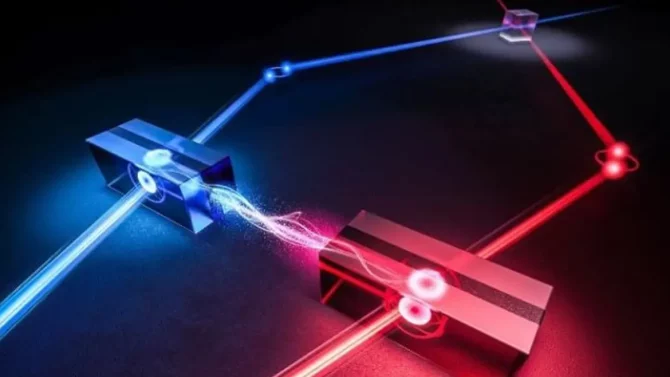Boost for the quantum internet
Quantum networks establish connections between quantum processors or quantum sensors, facilitating secure communication and high-performance distributed sensor networks. Within these networks, the exchange of quantum information occurs through photons traversing optical waveguides. However, over long distances, the probability of photon loss significantly increases. Since quantum information cannot be replicated and amplified easily, Hans Briegel, Wolfgang Dür, Ignacio Cirac, and Peter Zoller, all formerly associated with the University of Innsbruck, conceived the blueprint for a quantum repeater a quarter-century ago. This groundbreaking device incorporates entanglement sources and memories based on the interaction between light and matter, enabling the establishment of entanglement across independent network links. The connections are then linked via an entanglement swap, ultimately allowing the distribution of entanglement over extensive distances.
Remarkably, transmission over a distance of 800 kilometers has now become a reality. A team of quantum physicists, led by Ben Lanyon from the Department of Experimental Physics at the University of Innsbruck, has successfully constructed the essential components of a quantum repeater. This fully operational network node comprises two single matter systems, which enable the creation of entanglement with a photon at the standard frequency of the telecommunications network, as well as entanglement swapping operations. The repeater node features a pair of calcium ions confined within an ion trap housed in an optical resonator, along with the conversion of a single photon to the telecom wavelength. Through this setup, the researchers have demonstrated the transfer of quantum information across a 50-kilometer-long optical fiber, with the quantum repeater strategically positioned at the midway point between the starting and endpoint. Furthermore, the scientists have conducted calculations to determine the necessary enhancements required to enable transmission over a remarkable distance of 800 kilometers, thus enabling the connection between Innsbruck and Vienna.
These groundbreaking findings have been published in Physical Review Letters. The research received funding from a START award granted by the Austrian Science Fund FWF, the Austrian Academy of Sciences, and the European Union, among other contributors. Lanyon’s team is an integral part of the Quantum Internet Alliance, an international initiative supported by the EU Quantum Flagship project.
Read More: How to Change the Calculator Theme in Windows 10/11





